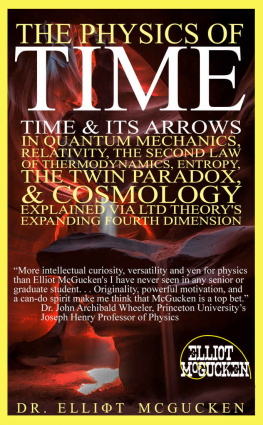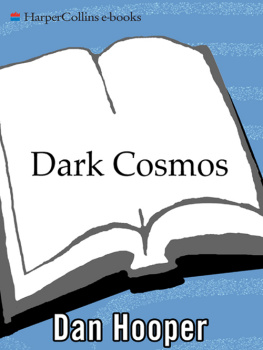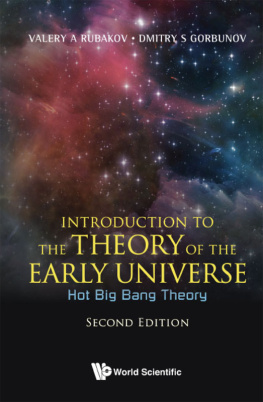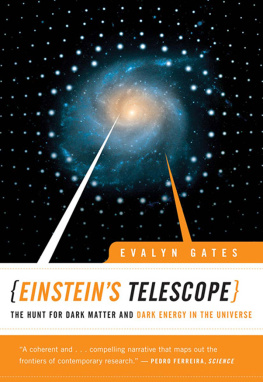1. Early Ideas of Space and Vacuum
The concept of empty spacevoid, vacuum, or sometimes nothingnesshas a fascinating history that goes back to the ancient Greeks and can be followed all the way to the present. The brief version of the story is this. For nearly two millennia a true vacuum was thought to be an impossibility, or at least something which does not exist in nature; then, in the seventeenth century the new experimental physics proved that a vacuum can in fact be produced and made a study of inquiry; but later generations of physicists realized that this vacuum is a far cry from the absolute empty space discussed by the ancients. In any case, physicists vacuum or so-called empty space is entirely different from the metaphysical concept of nothingness.
According to some Presocratic thinkers, notably the atomistic school associated with Leucippus and Democritus, a vacuum was not only possible but also necessary. The entire natural philosophy of the atomists rested on the postulate that the indivisible elements of matter, called atoms, move in an absolute vacuum. This is all there is, atoms and empty space, and the latter is no less real than the former. According to Simplicius, a Greek commentator from the early sixth century AD, supposing the substance of the atom to be compact and full, he [Leucippus] said it is being and that it moves in the void, which he called non-being and which he declares is no less than what is (McKirahan , p. 10). However, these were views of which Aristotle, the most influential thinker ever in the history of science and ideas, would have nothing.
Aristotles cosmos was a plenum, and his basic concepts of space and place ruled out a vacuum, whether on a small or large scale. In Physics and other of his works, he launched an impressive number of objections against void space, which he defined as a place devoid of body, but capable of receiving it. Almost all of his arguments were thought experiments or of the reductio ad absurdum type where the assumption of a vacuum was shown to lead to absurd conclusions. For example, by its very nature empty space is completely homogeneous and for this reason admits no difference. Every part of it is identical to every other part, and so there can be no spatial orientation in a void and no measurement of distances either. What Aristotle called natural motion was, insofar as it happens on the Earth and not in the heavens, either straight up or straight down. Whereas the elements fire and air naturally move upward, water and earth move downward. But in empty space there is no up and down, and so a stone would not know how to move. According to ancient thought bodies move because there is a reason for it, but in a vacuum there can be no reason for moving in a particular direction rather than in some other direction.
Not only would there be no reason or purpose for a particular motion in a void, there might be no motion at all. Another of Aristotles arguments related to falling bodies, the velocity

of which he claimed was governed by the weight (or size) of the body and the resistance of the medium in which it moves. Somewhat anachronistically Aristotles law of motion may be written
where

is a constant and

the friction between the body and the surrounding medium.

is the motive force, assumed to be proportional to the weight or gravitas of the body. Thus, a body falling freely in empty space would, irrespective of its weight, size and material, move with infinite velocity. Clearly, instantaneous natural motion must be ruled out as impossible. Even if motion in a void were finite, bodies of different weight would fall with equal velocities, contrary to Aristotles principles of natural philosophy. Because there is no medium in a void, no reason can be given why one body should move with a greater velocity than another.
Aristotles ether, as he discussed it most fully in his influential work De Caelo , was a divine substance or fifth element, known by his medieval successors as quinta essentia . It made up everything in the heavensthe part of the universe above the Moonand was, unlike the matter of the sublunar world, pure, ungenerated, incorruptible, and transparent. While the vast expanse between the celestial bodies appears to be empty, in reality it is filled up with the subtle matter or quintessence. According to some modern commentators, Aristotles ether is close in spirit to the dark cosmological energy (Krauss ). However, there is the obvious difference that whereas dark energy is everywhere in space, the ether of the Aristotelians was strictly limited to the celestial regions. And, of course, this is not the only difference.
Whereas Aristotles space and quintessential ether were essentially passive qualities, other Greek thinkers proposed that all of space was filled with a continuous active principle. The Stoic school of philosophy agreed that there was no empty space, and their space-filling pneuma was a means to avoid it. However, pneuma was a vital elastic substance that could change in both time and place. Stoic philosophers conceived the plenum as a mixture of the elements fire and air, the mixture being associated with a dynamical function embracing all natural phenomena. The pneuma filled the whole universe, both the space between bodies and the bodies themselves. According to Chrysippos, a philosopher of the third century BC, the whole of nature is united by the pneuma which permeates it and by which the world is kept together and is made coherent and interconnected (Sambursky On the other hand, Aristotles ether or fifth element was restricted to the heavens, and in this respect it differed from pneuma .
There were similarities as well as dissimilarities between the Aristotelians and the Stoics. The latter followed Aristotle in conceiving the physical cosmos as a finite sphere without any vacua whatever. They also adopted Aristotles definition of vacuum as a space that could contain body, but in fact did not. Nonetheless, they supposed the most un-Aristotelian notion of an immense void that was not only extra-cosmic but also infinitely extended. This extra-cosmic void was a three-dimensional container in which the finite spherical cosmos was embedded (Fig. , p. 203). The Stoics universe was cyclic, which was another non-Aristotelian feature.









 of which he claimed was governed by the weight (or size) of the body and the resistance of the medium in which it moves. Somewhat anachronistically Aristotles law of motion may be written
of which he claimed was governed by the weight (or size) of the body and the resistance of the medium in which it moves. Somewhat anachronistically Aristotles law of motion may be written 
 is a constant and
is a constant and  the friction between the body and the surrounding medium.
the friction between the body and the surrounding medium.  is the motive force, assumed to be proportional to the weight or gravitas of the body. Thus, a body falling freely in empty space would, irrespective of its weight, size and material, move with infinite velocity. Clearly, instantaneous natural motion must be ruled out as impossible. Even if motion in a void were finite, bodies of different weight would fall with equal velocities, contrary to Aristotles principles of natural philosophy. Because there is no medium in a void, no reason can be given why one body should move with a greater velocity than another.
is the motive force, assumed to be proportional to the weight or gravitas of the body. Thus, a body falling freely in empty space would, irrespective of its weight, size and material, move with infinite velocity. Clearly, instantaneous natural motion must be ruled out as impossible. Even if motion in a void were finite, bodies of different weight would fall with equal velocities, contrary to Aristotles principles of natural philosophy. Because there is no medium in a void, no reason can be given why one body should move with a greater velocity than another.